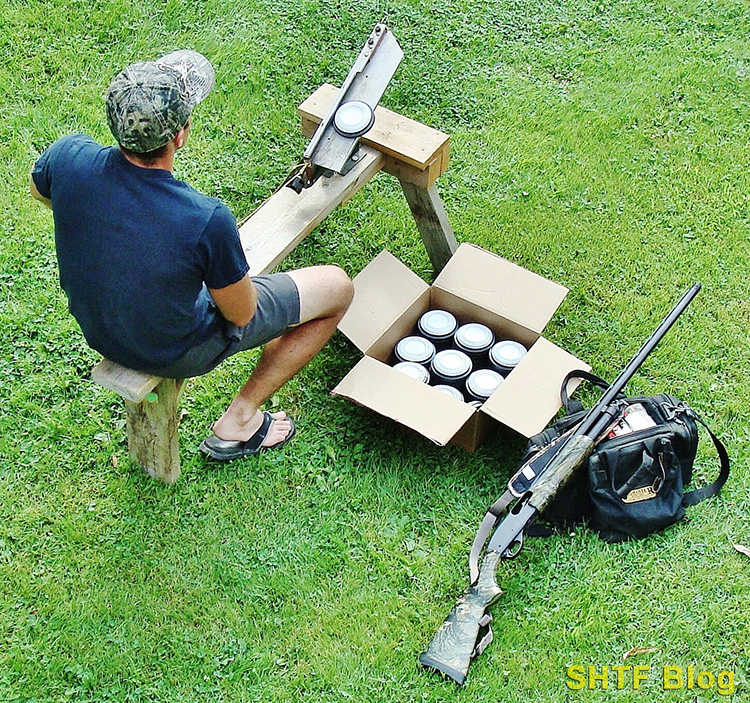
Shotgun shot sizes, gauges, and drams may be complicated to even skilled shooters. It doesn’t have to be. On this article I’ll break down the fundamentals to provide you, the shotgun shooter, a greater understanding of your shotgun and its many choices.
If you’d like much more element than what’s offered on this article, take into account my e book on shotguns: Shotguns, A Complete Information. I pulled a few of the content material from that e book into this text, however the e book accommodates lot extra info on shotgun shells, gauges, optics, and so forth.
Naked Shelf Background
Naked ammo cabinets are an more and more widespread sight. However, for these of us who shoot, this scene is nothing new. Working example: final summer season, the claybird crew I shot with struggled to take care of a weekly schedule. We had few troubles sourcing clay pigeons, however shotgun shells have been scarce.
Any we tracked down have been additionally ridiculously costly. I lastly dusted off my reloading press and dragged out a bag of 12 Gauge Winchester AA hulls. Earlier than lengthy I had a provide of factory-equivalent skeet masses. Others started stalking cabinets in hopes of discovering one thing comparable. One member of our group lastly discovered a case of off-brand 12-gauge shells, however one surprising dividend was their snappy recoil.
After I inquired concerning the load, his reply was confined to the shot-charge, an oz and an eighth of #7 ½. Dram-equivalent? That query elicited a shrug. Turned out, “drams” have been a thriller for everybody current regardless of a few years of expertise. Then once more, since we have been taking pictures what we might discover, that info could have been moot.
Nonetheless, “drams” do translate to velocity – with a direct bearing on recoil. Say you’re beginning a brand new shooter on informally tossed claybirds. No sense pummeling anybody, not to mention a smaller-statured newbie. Past a sore face and bruised shoulder, the doubtless end result will likely be an incurable flinch.
Ammo Field Labeling
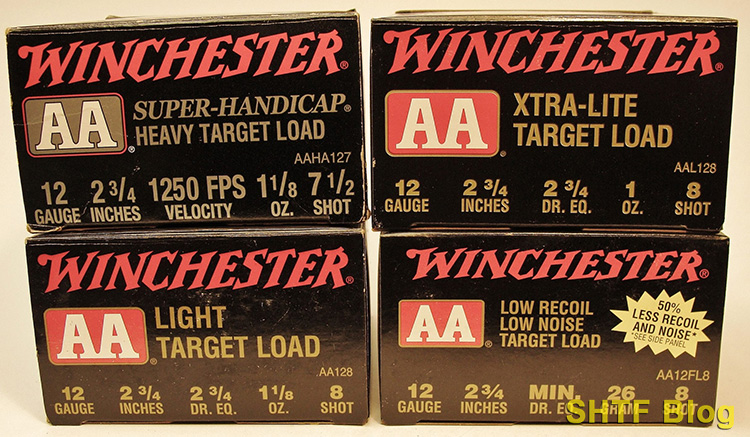
Luckily, these issues may be prevented – if we are able to decipher the knowledge on a shell-box. So, take a look at the 4 12 Gauge shell packing containers proven within the above picture, beginning with the one to the higher proper.
It’s a light Winchester AA X-TRA LITE Goal Load appropriate for regulation skeet targets, or others engaged inside 35 yards.
- 12 Ga. Signifies the “gauge” of the shell; a 12 gauge.
- 2 ¾ INCHES Signifies the size of the shell.
- 2 ¾ Dr. Eq. Signifies the powder cost; 2 ¾-dram-equivalent.
- 1 oz. Signifies the shell’s shot load in ounces.
- 8 SHOT Signifies the scale of the shot; #8 pellets.
Subsequent come the main points. Nonetheless a thriller for some, the “gauge” system is an affordable place to begin.
Gauges
A standard shotgun makes use of a smooth-bore barrel designed to fireside a number of projectiles. As such, there’s no actual want for a exact caliber governing the match of a bullet to a bore. Nonetheless, some diploma of standardization is critical. Thus, the gauge-designation, which dates to earlier than the commercial revolution. For an extended rationalization of gauges, see my article Shotgun Gauges Defined.
Gauge Development
A 12 Ga. is larger than a 20 Ga., which could appear backwards. It’s an outdated British system that “gauges” a shotgun barrel. The gauge itself is decided by the variety of lead balls that can squeak via the shotgun’s barrel to equal one pound. If we nudged a lead ball via a 16 gauge barrel, we’d uncover each weighed an oz. If we set our scale to stability out at one pound, we’d depend sixteen.
If a bigger barrel was gauged with this method, it will take fewer balls to hit the 1-pound mark. Analyzing a 12 Ga., every ball would weigh 1 1/8 ounces, and it will solely take 12 of them to equal a pound.
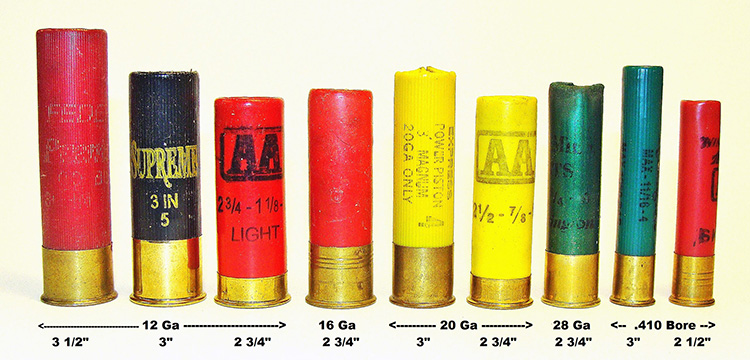
Then again, the smaller 20 gauge would require extra lead balls to succeed in the pound mark. As a result of they’re smaller, every of the 20’s lead spheres would solely weigh 7/8 ounce.
A 28 Gauge is even smaller (and plenty of are a pleasure to hold). An anomaly is the little .410 bore, which isn’t a gauge in any respect; it’s a caliber. On the different finish of the spectrum lies the mighty 10 Gauge, widespread with some waterfowlers as a result of it may possibly throw massive portions of federally mandated non-toxic pellets.
Chambers & Shell Lengths
You possibly can nonetheless run into older shotguns with odd-length chambers. Some are British or European side-by-sides with shorter 2 ½” chambers.
Commonplace 2 ¾” Shells
Throughout the 20th Century, many of the gauges advanced to besides now-standard 2 ¾” shells. In the present day, many shotguns are chambered to just accept 3” Magnum shells, nonetheless, you’ll be able to nonetheless hearth 2 ¾” via them. One exception is the marginally shorter commonplace 2 ½” .410 size (which solely throws ½ ounce of shot). These shells may be safely fired via 3” magnum-length .410 chambers.
Magnums
By stepping as much as 3-inch masses we are able to use longer shells that pack in additional pellets. We will additionally beat the Dickens out of ourselves, particularly with lighter-weight weapons. The three” Magnums are usually loaded to most pressures, utilizing very heavy shot payloads. Need extra efficiency and a few further abuse? Strive a 3 ½” Magnum, now accessible as 12 Gauge. Or simply step as much as the mighty 10 Gauge and eat your Wheaties.
Chamber Match
If doubtful, you’ll be able to measure a shell to find out its size. Permitting for the fired crimp part to open, a loaded shell will likely be a bit quick. In different phrases, a 2 ¾” hull will run a bit under that measurement – someplace round 2 ½ inches. Most barrels are stamped with their chambering. European markings are sometimes metric, and a 70mm stamping is the equal of a 2 ¾” chamber (see “cautions” under).
Commonplace vs Magnum Shells
Since for each motion there’s an equal and reverse response, plan on a large-gauge gun heading rearward in a rush. I do shoot just a few 3” Magnum 12 gauge shells every season. However, their use is confined to waterfowl and turkeys – robust birds typically engaged at outer shotgun limits. I persist with 2 ¾ inch shells for the whole lot else and by no means discover them missing.
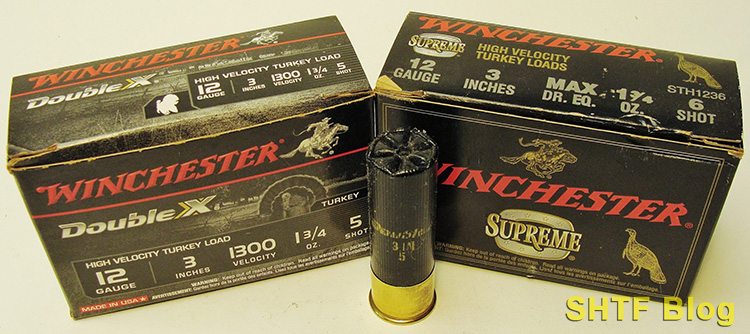
Dram-Equal vs Energy
Many trendy rifle cartridges develop over 50,000 P.S.I. at peak strain. Shotguns run at a lot decrease numbers – often solely 25%. With most pressures operating under 12,000 P.S.I., we are able to nonetheless expertise loads of recoil when utilizing hotter masses. Nonetheless, the our bodies of shotgun shells (or cartridges) may be created from plastic (and even cardboard) as an alternative of brass. Steel is confined to the bottom part. “Excessive-base” sorts are used for stiffer area masses, and a few that resemble brass are literally created from plated metal.
Black Powder Roots
The earliest “paper shells” used black powder, which was disbursed in drams. A reasonably heat 12 gauge lure load contained 3 drams of black powder. Stronger looking masses may comprise 4 drams. A lightweight 12 Ga. load may solely have 2 ¾ drams – or, even much less.
Equal Smokeless Fees
Round 1900, trendy smokeless powder caught on and we’ve been burning it ever since. Nonetheless, the old-timers wanted some body of reference when matching energy to recreation. That’s the place “dram equal” comes from. However, it’s a volumetric measurement! That quantity of recent smokeless powder would blow the gun to smithereens. In all probability, the shooter as nicely!
3-Dram Instance
A 12 gauge lure load is designed to interrupt clay pigeons out to round 45 yards. A traditional instance is Winchester’s SUPER-HANDICAP HEAVY TARGET LOAD (higher left).The labeling signifies a 2 ¾” shell, containing 1 1/8 ounces of #7 ½ shot. Rumor has it this load makes use of a 3-dram equal cost – however the that info is lacking. Muzzle velocity is proven as an alternative; a zippy 1250 ft per second (fps). A doable purpose; some lure golf equipment restrict shells to 3-drams or much less to restrict shot-fall.
2 ¾-Dram Instance
The 12 Ga. WINCHESTER LITE TARGET LOAD (decrease left) is a tried an true skeet alternative, nice for crushing regulation targets at 21 yards. Its 2 ¾-dram cost will develop round 1145 fps with much less recoil. In the present day’s 20 Gauge 2 ½-dram, 7/8 oz. goal masses are practically as efficient, and recoil may even be much less – in a gun of an identical weight.
Others
Heavier 2 ¾” 12 Ga. waterfowl masses may use 3 ¾ dram-equivalent costs to spice up metal shot velocity.
A rule of thumb: Drams equate to velocity, whether or not generated by black or smokeless powder. Bother is, typically the knowledge may be cryptic. The field of low-recoil shells proven to the decrease proper is such an instance.
Ounces
As famous above, a 12 Gauge bore will settle for a dozen lead balls, every weighing 1 1/8 ounces. Not too coincidentally, that’s additionally the burden of a typical 2 ¾” goal shot cost. Likewise, a typical 2 ¾” 20 Ga. accommodates 7/8 ozof shot. However, looking masses typically comprise heavier payloads, and a few 12 Ga. 3” Magnum variations can push two ounces. In a given shot measurement (see under), extra weight equals further pellets. Once more although, the trade-off is larger recoil.
Therefore, the WINCHESTER LOW RECOIL LOW NOISE TARGET LOAD (decrease proper). The “MIN” dram-equivalent powder cost is a thriller, however I’m guessing its lower than a typical 20 Ga. The 26-Gram shot load works out to 0.92-ounce, and it exits at lower than 1000 fps. This shell performs as marketed, and it’s a fantastic alternative for learners, though it might not cycle all semi-autos.
Shotgun Shot Sizes
The American system makes use of numbers to quantify pellet-size. Like gauges, a decrease quantity signifies a much bigger pellet. A helpful formulation to find out precise birdshot diameter includes the quantity 17. Coincidentally, that’s the approximate measurement of a BB in a whole bunch of an inch; 0.177. In the event you subtract a pellets measurement from the quantity 17, you’ll be able to decide its diameter in hundredths of an inch; its caliber.
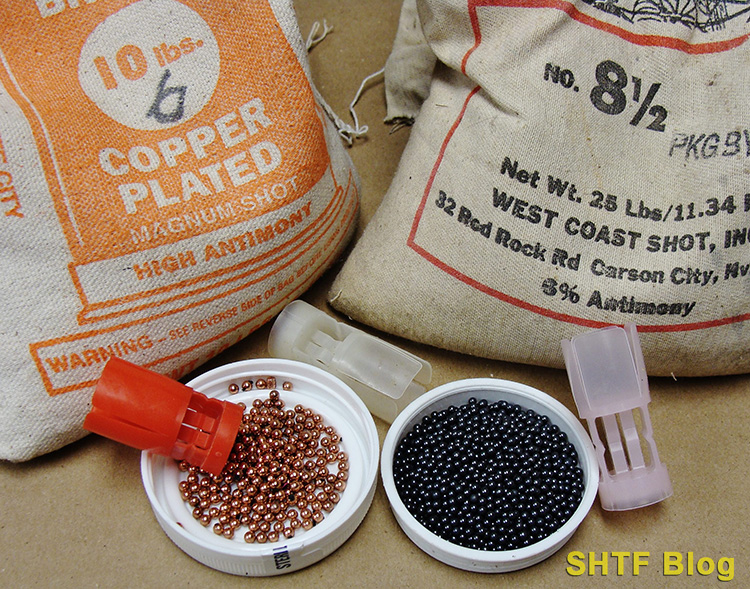
Standard Pellets
A #2 pellet is only a bit smaller than a 17-caliber BB, measuring roughly 0.15”. It’s among the many largest birdshot sizes and is usually used on geese. A #9 pellet, measuring round 0.08” is the smallest widespread measurement, used for short-range claybird video games like skeet. Barely bigger #8, or #7 ½ pellets, are used for smaller upland birds and longer-range claybirds.
Pheasant hunters typically favor #6 shot, and loads of them use #4s. By way of the Seventies, these sizes would have labored for geese. Then, Federal laws banned lead shot for migratory waterfowl. Metal shot turned the usual substitute, adopted by alloys containing bismuth or tungsten. A magnet will inform you whether or not the shell accommodates metal shot, and your pleasant recreation warden will most likely have one.
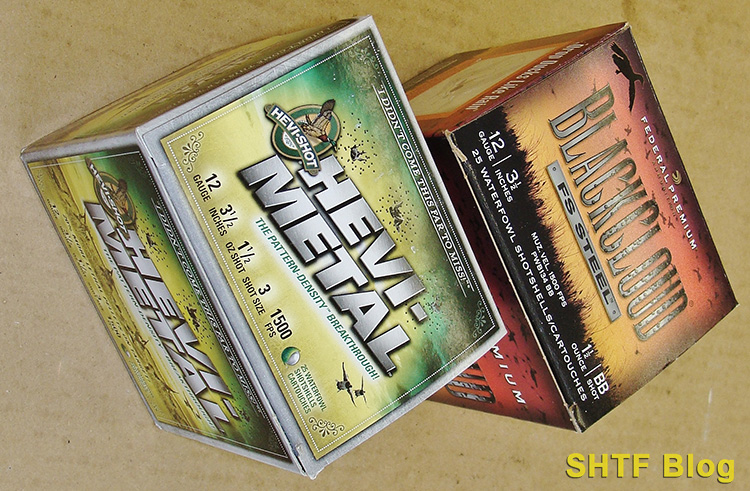
Shot High quality
Lead pellets are topic to violent forces throughout their transit via a barrel, leading to deformation and inconsistent patterns. The answer is to harden the pellets by including antimony. As a result of this alloy is pricey, premium shells value extra. Coating the pellets with copper or nickel plating can present an extra degree of hardening, with a corresponding improve in value. Cheaper shells use softer shot pellets which throw bigger, extra irregular patterns. However, at shut distances, large patterns can typically be a bonus.
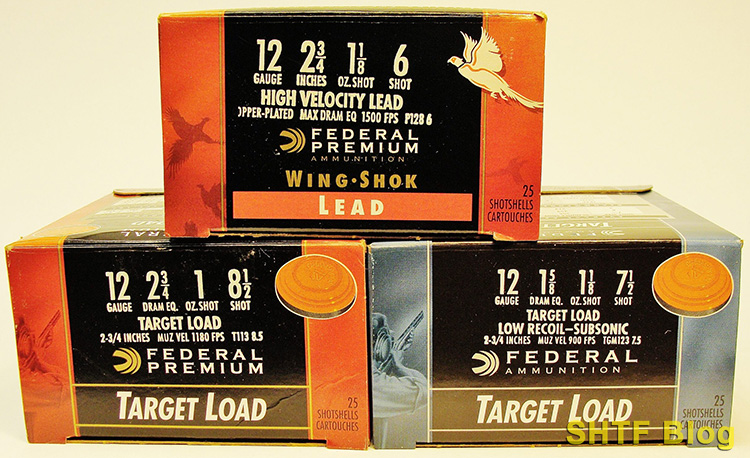
Notable Cautions
Don’t try to fireside a shell in a gun for which it isn’t designed! In the event you’re undecided concerning the gun, take it to a good gunsmith.
Chambers & Strain
Firing a 3” shell in a 2 ¾” chamber will produce extreme strain. Alongside the identical concept, don’t hearth commonplace 2 ¾” shells in a shorter 2 ½” chamber.
Older Shotguns
Compounding the issue, there are nonetheless loads of outdated shotguns in circulation with Damascus barrels. Normally, they’ll be double-guns relationship from 1900, or earlier. The metal (which can be iron) will most likely show intriguing patterns that end result throughout manufacturing. Steel bands are wrapped, hammered, and welded collectively round a mandrel, that means the barrel partitions usually are not homogenous.
Damascus barrels have been developed to deal with black powder, which runs at a lot decrease strain – and can be extremely corrosive! Many develop weak spots that may rupture with disastrous outcomes upon subjection to smokeless pressures. In case you have a Damascus-barreled shotgun, deal with it as a pleasant wall-hanger.
Gauge Combine-Ups
God forbid, you inadvertently drop a 20 gauge shell in a 12 gauge chamber. The smaller 20 will disappear and cease at its entrance finish. A 12 Ga. shell loaded behind it may possibly then be lethal. For these of us sustaining a number of gauges, this chance is an actual concern.
Bore Obstructions
Different obstructions could also be much less spectacular, however they’re nonetheless able to inflicting severe damage. Some that come to thoughts embrace snow, mud, or a wad. In the event you expertise a humorous sounding report cease taking pictures, unload, and guarantee nothing is lodged within the barrel.
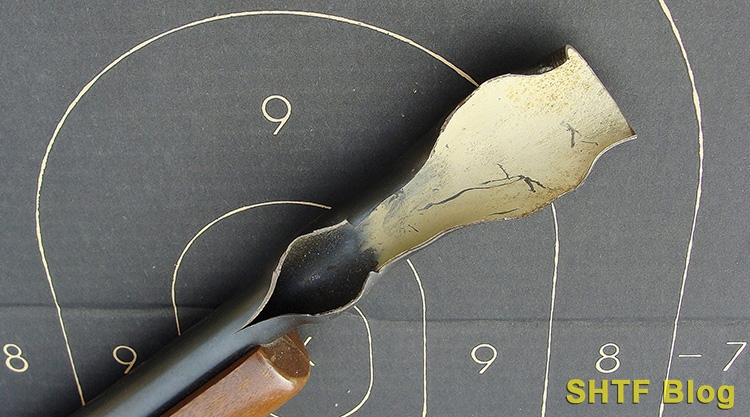
Final Ideas
You’ve most likely famous the absence of different shotgun projectiles akin to massive non-toxic pellets, buckshot, and slugs. The rationale? There’s sufficient info there to fill one other full put up.
Hopefully, this tome will function a information for these in determined want of shells, whether or not for weekend tailgate claybird shoots or upland chook hunts. No sense stocking up on poor selections if extra appropriate masses may be discovered. However, after all, that ain’t straightforward!

